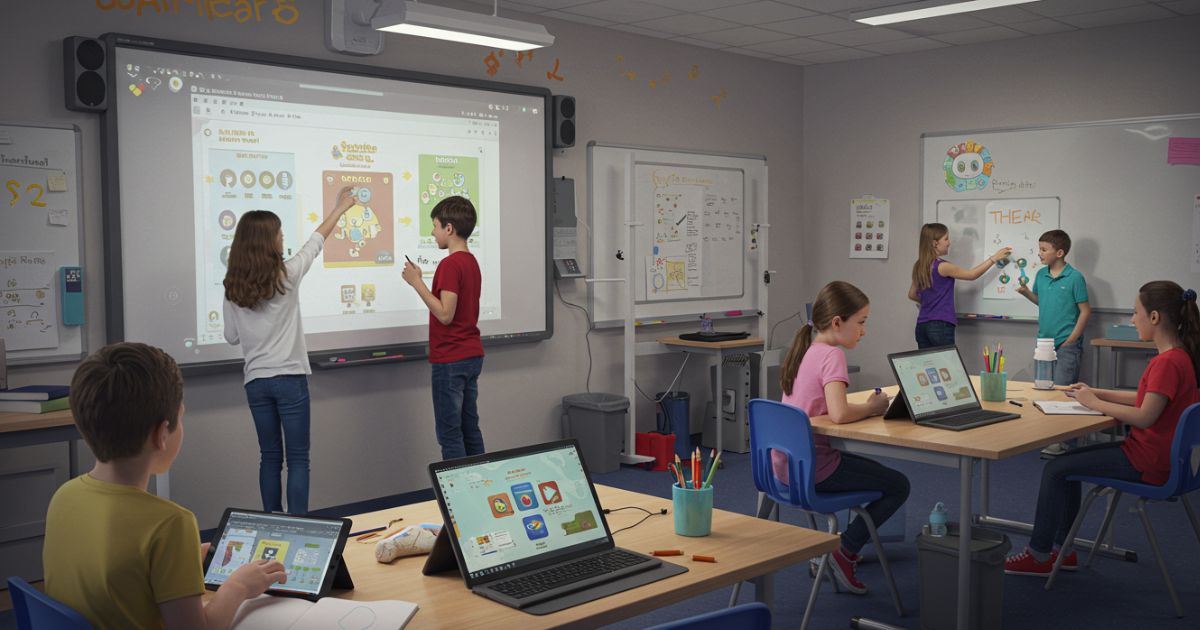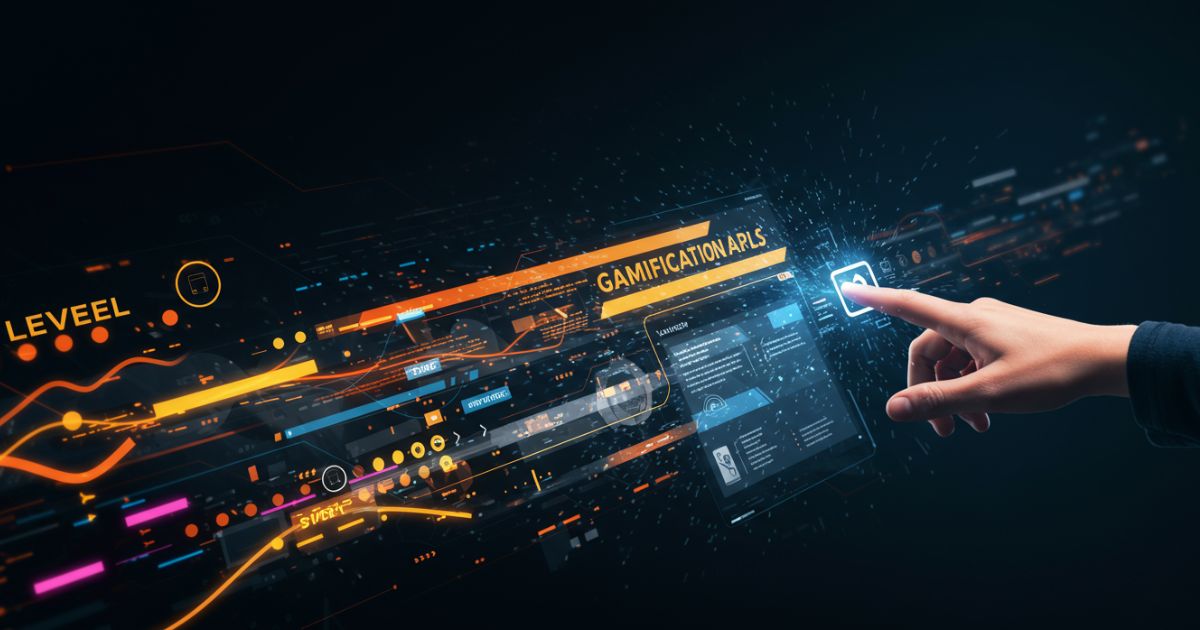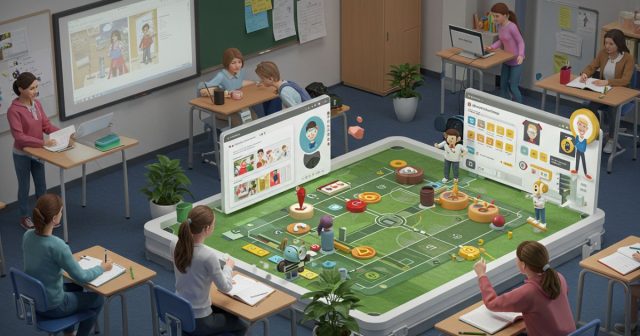Keeping students motivated in today’s classrooms can be tough. Gamification in education helps teachers make learning a fun, interactive, and rewarding experience. By incorporating elements such as points, badges, leaderboards, and challenges, students become more actively engaged, retain knowledge more effectively, and enjoy the learning process.
Teachers can use digital quizzes, classroom competitions, and game-based projects to encourage collaboration, problem-solving, and critical thinking. These strategies also help students set goals, track progress, and stay motivated over time. With gamification, learning becomes more engaging, personalized, and results-driven, giving every student a chance to succeed and thrive in the modern classroom.
What Is Gamification?
Gamification is the process of incorporating game-like features into environments that typically lack these elements. In education, this means weaving reward systems, progress indicators, and playful challenges into curriculum design to make learning more compelling. Unlike serious games or educational games—which are full-fledged games developed purely for learning—gamification overlays game mechanics onto existing learning activities, preserving core academic objectives while enhancing engagement.

Key Game Mechanics
- Points: Quantifiable units students earn by completing tasks or demonstrating mastery.
- Badges & Achievements: Visual rewards symbolizing milestones, skills, or accomplishments.
- Leaderboards: Ranking systems that introduce friendly competition among learners.
- Levels & Progress Bars: Indicate advancement towards goals, providing a sense of trajectory.
- Narrative & Storytelling: Frames lessons within compelling story arcs that promote emotional investment.
Benefits of Gamification in Education
When thoughtfully designed, gamification can yield powerful benefits for both students and educators. Here are some of the most significant advantages:
1. Increased Engagement
Game elements capture students’ attention and transform passive learning into active participation. Earning points or unlocking badges provides immediate feedback and gratification, encouraging learners to invest more effort in their studies.
2. Improved Motivation
By tapping into intrinsic motivators—such as mastery, autonomy, and purpose—gamification fosters a growth mindset. Students become more willing to embrace challenges and learn from setbacks when they view tasks through the lens of game-based progression.
3. Enhanced Collaboration
Team-based quests, cooperative missions, and peer competition promote social learning. When students work together to earn group achievements, they practice communication, problem-solving, and mutual support skills essential for 21st-century success.
4. Real-Time Feedback
Just as video games provide instant feedback on performance, gamified activities enable educators and learners to monitor progress continuously. This immediacy helps identify knowledge gaps, tailor instruction, and reinforce positive behaviors before misconceptions take root.
Design Principles for Effective Gamification

Successful gamification hinges on sound instructional and game design principles. Educators should consider the following best practices when developing gamified lessons:
Align Game Mechanics with Learning Objectives
Every point, badge, and challenge must serve an educational purpose. Avoid adding game elements purely for entertainment—ensure they reinforce key concepts, skills, or behaviors you aim to cultivate.
Balance Challenge and Skill Level
Implement adaptive difficulty to accommodate diverse learners. Tasks that are too easy lead to boredom, while overly challenging activities can cause frustration. Utilize levels or competency tiers to effectively scaffold experiences.
Foster Autonomy and Choice
Offer multiple pathways, elective missions, or optional side-quests to allow students to pursue topics that resonate with their interests. Autonomy enhances motivation and nurtures a sense of ownership over the learning process.
Promote Social Interaction
Design both collaborative and competitive elements to accommodate different learning preferences. Team quests can foster camaraderie, while leaderboards and head-to-head challenges can energize competitive spirits when used judiciously.
Implementation Strategies
Translating gamification theory into classroom practice requires careful planning and the use of the right tools. Follow these steps to integrate gamified learning successfully:
1. Define Clear Goals
Identify the academic standards, skills, or behaviors you want to target. Articulate what students should know or be able to do by the end of the gamified unit.
2. Choose Appropriate Mechanics
Select game elements that align with your goals. For knowledge recall, consider timed quizzes with points; for collaboration, assign team-based challenges with shared rewards.
3. Leverage Technology Platforms
Utilize learning management systems (LMS) or dedicated gamification tools. Platforms like Classcraft, Kahoot!, or BadgeOS simplify implementation and track student progress automatically.
4. Communicate Rules Clearly
Provide students with a detailed guide or a mission brief. Transparency around mechanics, scoring, and grading criteria builds trust and ensures fairness.
5. Iterate and Evolve
Gather student feedback and performance data on a regular basis. Utilize insights to refine game mechanics, adjust the difficulty, and introduce new challenges that sustain long-term engagement.
Top Technology Tools for Classroom Gamification

A variety of edtech solutions simplify gamification for educators. Here are some popular options:
- Classcraft: Transforms your entire class into a role-playing game, complete with quests, health points, and collaborative workflows.
- Kahoot!: Facilitates live quiz competitions, surveys, and polls, turning formative assessments into high-energy experiences.
- Quizizz: Offers self-paced quizzes with memes, leaderboards, and progress tracking to encourage friendly competition.
- BadgeOS: A WordPress plugin that awards digital badges and certificates as students accomplish milestones.
- Duolingo for Schools: Leverages language-learning techniques and streak-based incentives to promote daily practice.
Measuring Success and Learning Outcomes
Quantitative and qualitative metrics help you evaluate the impact of gamification on student achievement and engagement. Consider tracking:
Engagement Metrics
- Login frequency or platform usage stats
- Quest or challenge completion rates
- Time on task compared to traditional lessons
Academic Performance
- Pre- and post-assessment score improvements
- Skill mastery levels across game levels
- Quality of work and creativity demonstrated
Student Feedback
Use surveys, focus groups, or informal reflections to gather insights on student perceptions, motivation, and suggestions for improvement.
Challenges and How to Overcome Them
While gamification offers tremendous potential, it’s not without hurdles. Here are common challenges and solutions:
1. Overemphasis on Rewards
Risk: Students focus on badges instead of learning. Solution: Tie rewards to meaningful achievements and progressively shift emphasis from extrinsic to intrinsic motivation.
2. Technology Barriers
Risk: Limited access to devices or unreliable connectivity. Solution: Incorporate low-tech or offline gamified activities—such as paper-based flash quests or classroom escape rooms—to ensure inclusivity.
3. Equity and Fairness
Risk: Leaderboards can demoralize lower-performing students. Solution: Use tiered leaderboards, team-based scoring, or private progress dashboards to maintain a supportive environment.
Future Trends in Educational Gamification
As technology advances, gamification in education will evolve in exciting ways:
Augmented Reality (AR) and Virtual Reality (VR)
Immersive simulations and interactive AR overlays can bring lessons to life, allowing students to conduct virtual science experiments or explore historical sites firsthand.
Adaptive Learning Algorithms
AI-driven platforms will personalize game difficulty and content in real time, ensuring each learner receives precisely the right level of challenge and support.
Blockchain Badging
Verifiable, portable credentials stored on the blockchain will recognize micro-achievements and lifelong learning milestones across institutions.
Conclusion
Gamification is changing the way we teach, connecting classroom learning with the digital experiences students enjoy every day. When combined with AI-driven adaptive learning, game mechanics can boost engagement, motivation, and collaboration while helping students master new skills. By choosing the right tools, tracking outcomes, and adjusting your approach, every step of gamification becomes an opportunity to improve teaching and support learners. Embrace the power of play, and watch your classroom become a space where students stay motivated, deepen their knowledge, and take charge of their own success.







